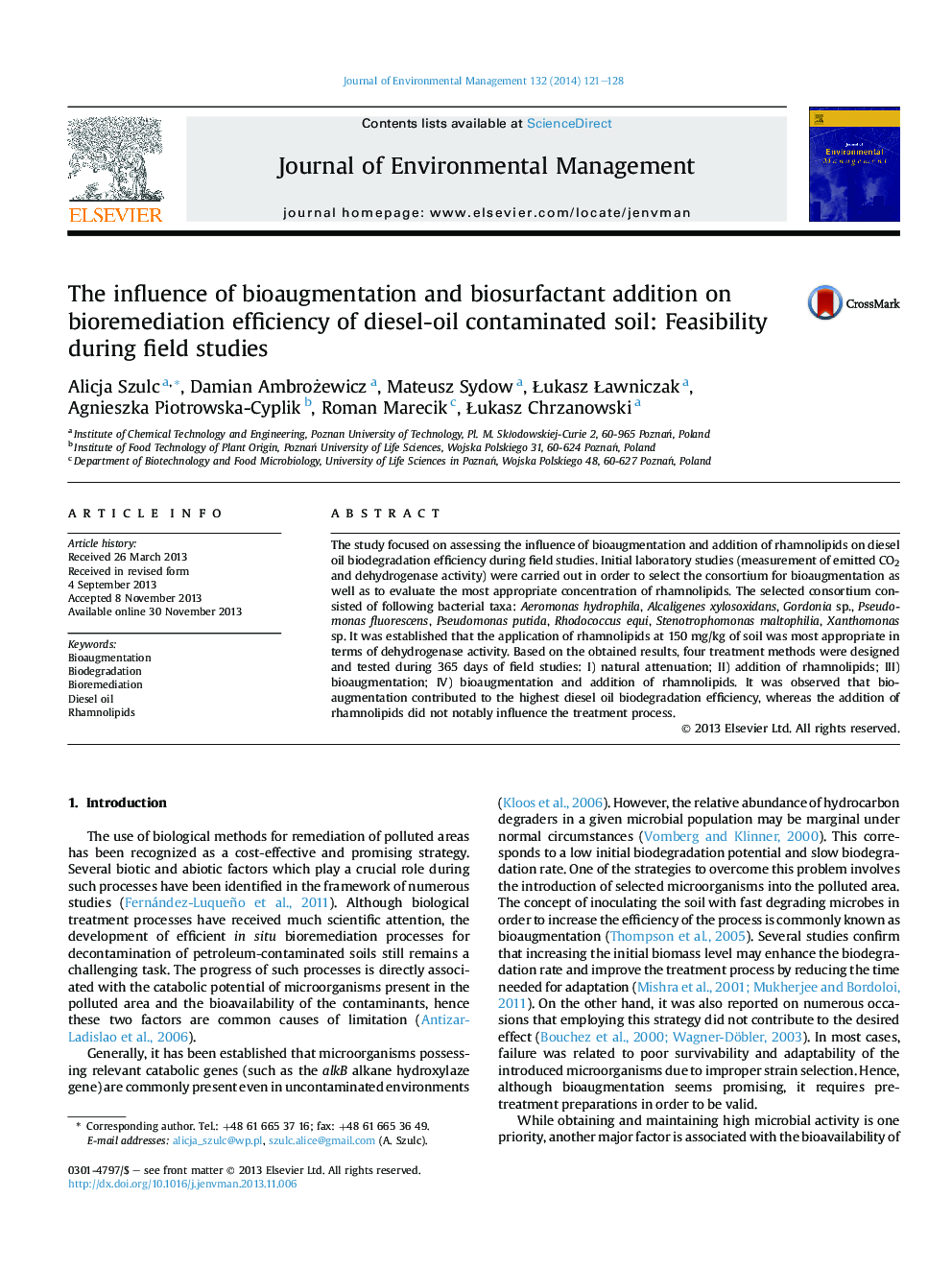| Article ID | Journal | Published Year | Pages | File Type |
|---|---|---|---|---|
| 1055788 | Journal of Environmental Management | 2014 | 8 Pages |
•Bioremediation of silty-clay soil freshly spiked with diesel oil was conducted.•Bioaugmentation, introduction of rhamnolipids and a mixed approach were evaluated.•Only 3 of the 10 studied consortia had a positive effect upon bioaugmentation.•The use of bioaugmentation increased the TPH removal efficiency by 70%.•Introduction of rhamnolipids had no significant effect on the TPH removal efficiency.
The study focused on assessing the influence of bioaugmentation and addition of rhamnolipids on diesel oil biodegradation efficiency during field studies. Initial laboratory studies (measurement of emitted CO2 and dehydrogenase activity) were carried out in order to select the consortium for bioaugmentation as well as to evaluate the most appropriate concentration of rhamnolipids. The selected consortium consisted of following bacterial taxa: Aeromonas hydrophila, Alcaligenes xylosoxidans, Gordonia sp., Pseudomonas fluorescens, Pseudomonas putida, Rhodococcus equi, Stenotrophomonas maltophilia, Xanthomonas sp. It was established that the application of rhamnolipids at 150 mg/kg of soil was most appropriate in terms of dehydrogenase activity. Based on the obtained results, four treatment methods were designed and tested during 365 days of field studies: I) natural attenuation; II) addition of rhamnolipids; III) bioaugmentation; IV) bioaugmentation and addition of rhamnolipids. It was observed that bioaugmentation contributed to the highest diesel oil biodegradation efficiency, whereas the addition of rhamnolipids did not notably influence the treatment process.
